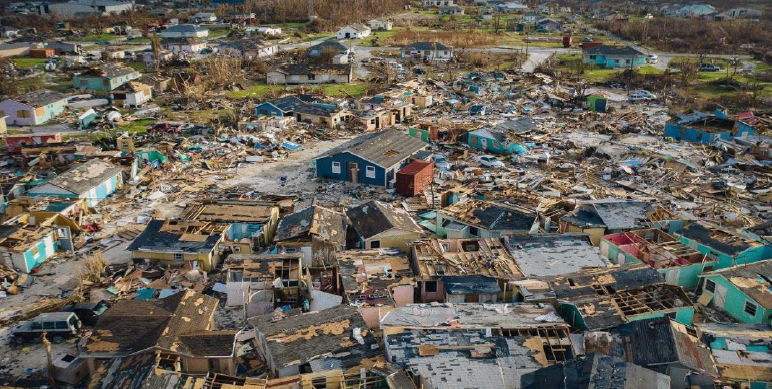This report provides an overview of the response to the environmental impacts of Hurricane Dorian. Dorian made landfall as a Category 5 hurricane in The Bahamas on 1 September 2019, leaving a trail of devastation behind.
The full report is accessible here.
This report is divided into three parts, which can also be accessed individually below:

Executive Summary
Key environmental concerns in the aftermath of Dorian included: i) the management of large quantities of disaster waste generated by the hurricane; ii) the confirmed inland spill of crude oil and any potential spills at sea from Equinor’s oil storage facility on Grand Bahama Island; and iii) any potential secondary and cascading impacts resulting from damages to the numerous hazardous operation facilities located on Abaco and Grand Bahama Islands.
To support the government-led response to Hurricane Dorian, a United Nations Disaster Assessment and Coordination (UNDAC) team was deployed to The Bahamas from 8 to 28 September. The team embedded an environmental expert from the UNEP/OCHA Joint Environment Unit (JEU).
The main objective of the overall mission was to provide technical advice to national and local authorities to rapidly identify, assess and mitigate any negative environmental impacts following the event, with an emphasis on those that posed immediate life-threatening risks to humans (both local communities and responders); advise on required follow-up actions; promote the early integration of environmental considerations in assessments and overall response efforts; facilitate knowledge sharing and information exchange among national and international counterparts on environmental matters; and deliver recommendations accordingly.
The mission outcomes showed that special considerations on hazardous waste should be incorporated in a comprehensive disaster waste management strategy and any ongoing clean-up efforts should be linked to this strategy.
Additional Resources
For additional resources, please refer to the following news articles on the topic:
- UN Environment Programme: Weathering the storm after Hurricane Dorian
- UN Office for the Coordination of Humanitarian Affairs: Averting a second killer wave: The environmental impacts of hurricanes